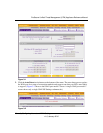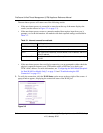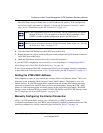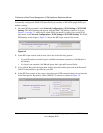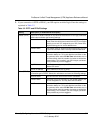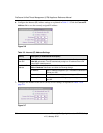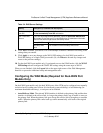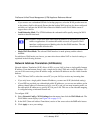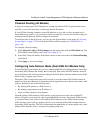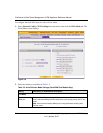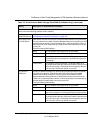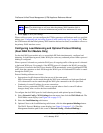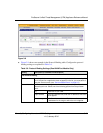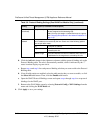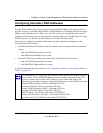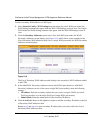
ProSecure Unified Threat Management (UTM) Appliance Reference Manual
Manually Configuring Internet and WAN Settings 3-11
v1.0, January 2010
Classical Routing (All Models)
In classical routing mode, the UTM performs routing, but without NAT. To gain Internet access,
each PC on your LAN must have a valid static Internet IP address.
If your ISP has allocated a number of static IP addresses to you, and you have assigned one of
these addresses to each PC, you can choose classical routing. Or, you can use classical routing for
routing private IP addresses within a campus environment.
To learn the status of the WAN ports, you can view the System Status screen page (see “Viewing
System Status” on page 11-20) or look at the LEDs on the front panel (see “Front Panel” on
page 1-10).
To configure classical routing:
1. Select Network Config > WAN Settings from the menu, then click the WAN Mode tab. The
WAN Mode screen displays (see Figure 3-8 on page 3-12).
2. In the NAT (Network Address Translation) section of the screen select the Classical Routing
radio button.
3. Click Apply to save your settings.
Configuring Auto-Rollover Mode (Dual-WAN Port Models Only)
For the dual-WAN port models only, to use a redundant ISP link for backup purposes, ensure that
the backup WAN interface has already been configured. Then select the WAN interface that will
act as the primary link for this mode and configure the WAN failure detection method on the WAN
Mode screen to support auto-rollover.
When the UTM is configured in auto-rollover mode, it uses the selected WAN failure detection
method to check the connection of the primary link at regular intervals to detect router status. Link
failure is detected in one of the following ways:
• By sending DNS queries to a DNS server, or
• By sending a ping request to an IP address, or
• None (no failure detection is performed).
From the primary WAN interface, DNS queries or ping requests are sent to the specified IP
address. If replies are not received, after a specified number of retries, the primary WAN interface
is considered down and a rollover to the backup WAN interface occurs. When the the primary
WAN interface comes back up, another rollover occurs from the backup WAN interface back to
the primary WAN interface. The WAN failure detection method that you select applies only to the
primary WAN interface, that is, it monitors the primary link only.



